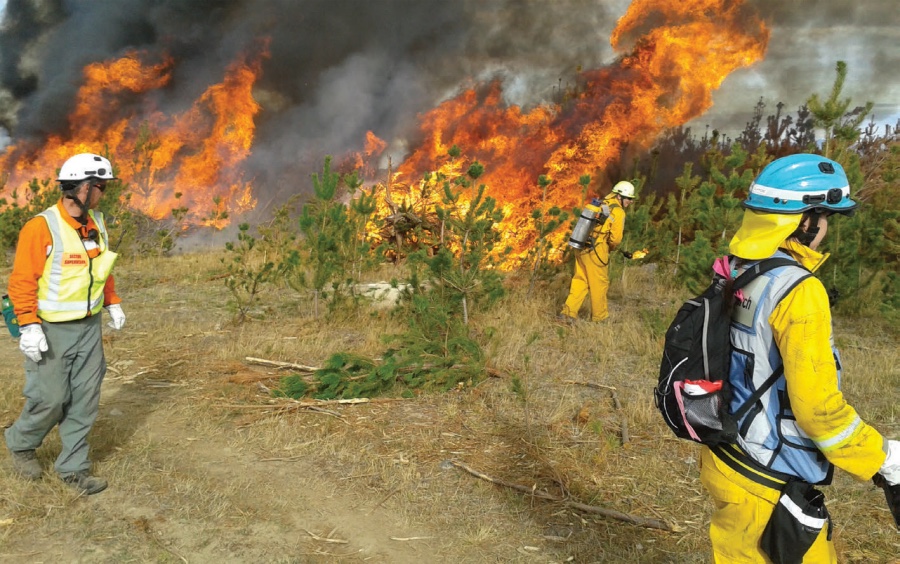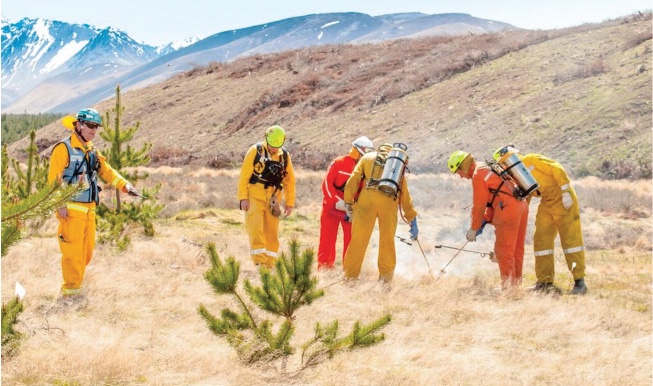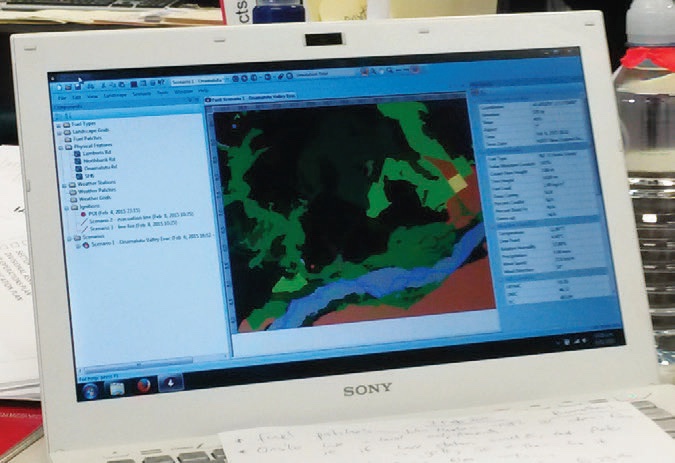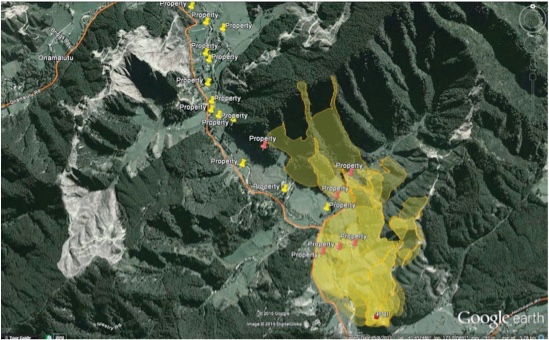
This is free.
Scion Rural Fire Research Group – Understanding extreme fire behaviour
Richard Parker, Veronica Clifford, Tara Strand, Grant Pearce & Lisa Langer, New Zealand Tree Grower May 2016.
The Scion Rural Fire Research Group is New Zealand’s only provider of specialist fire research expertise in forest and rural landscapes.We develop science and technology to protect life and property, and to manage fire in the landscape, including −
- Fire behaviour under different weather, terrain and fuel conditions
- Fire-atmosphere linkages for smoke and extreme fire behaviour
- Community safety and protection
- Safe and effective use of fire for land management
- Firefighter safety and suppression effectiveness
- Methods and guides to support fire management decision-making.
Every year in New Zealand around 3,000 wildfires burn around 7,000 hectares of rural land. The economic, social and environmental costs of wildfire are growing, and will continue to grow because communities as an ignition source increasingly spread into rural and forested areas, and the changing climate results in hotter, drier conditions increasing the likelihood of ignition.
Scion has estimated that the annual average direct effect of rural fire on New Zealand’s economy is around $67 million, with indirect losses estimated to be at least two to three times the direct cost.Additional losses from effects on natural capital such as erosion, waterway sedimentation and loss of carbon can be as high as 30 to 60 times the direct losses.

These costs are higher for extreme fires. For example the insurance costs for the three large forest fires in Marlborough in 2015 were over $20 million. The recent Hanmer fire caused multiple evacuation, power outages and road closures. A major forest fire would have very high conservation and economic effects of around $190 million direct cost with downstream effects totalling about $345 million.
Burn trials and modelling
Extreme fire behaviour is characterised by rapidly increasing fire spread and intensity accompanied with fire characteristics such as fire whirls, ember transfer and rapid fire-front motion and can occur during small or large fires at any time and anywhere. Existing models cannot predict extreme fire. As our climate changes and hot, dry conditions persist, the frequency of extreme fires will increase resulting in greater potential for −
- Loss of life
- Loss of property, including forests and agricultural production with large economic impacts
- Loss of plants and animals in the conservation estate.
Scion is undertaking the research needed to improve the decision support methods which enable land managers and fire agencies to manage the serious risks posed by ‘normal’ and extreme fire behaviour, including potential for loss of life and property. This article presents two examples of the team’s research which are directly related to fire in tree species – wild conifer burn trials and fire behaviour modelling during extreme forest fires.
Wilding conifer burn trials

The more we understand fire behaviour in different vegetation the better prepared we will be for extreme fire. The spread of exotic wilding conifers has reached weed status in many regions of New Zealand and spraying with herbicide is a common control method. There is a poor understanding of fire behaviour in wildings as live trees and after spraying. This lack of knowledge is making it more difficult to effectively and cost-efficiently suppress fires in wildings. For example, an intense wildfire swept through Mount Cook Station in 2008 destroying 750 hectares of wilding trees and grassland.

A series of experimental burns, in wilding lodgepole pine Pinus contorta at Pukaki Downs and Aoraki Downs stations near Lake Pukaki, is under way to provide valuable data in sprayed and unsprayed wildings on fuel loadings, fire spread rates and fire growth. The data will be used to improve current fire behaviour models and prediction for rural fire managers.The burns are the most heavily instrumented ever to be conducted in New Zealand. Instruments will measure rate of fire spread, in- fire temperatures, and turbulence at the fire-atmosphere interface.
An experimental burn like this can only be done with the generous cooperation of the stations, local community and local rural fire organisations. In this case we are working with the South Canterbury Rural Fire Authority, Department of Conservation and other fire authorities from across Canterbury to ensure these fires remain under control.These agencies are providing firefighters and equipment to keep the burns within the designated area, but also to quickly contain any fire escape should one occur.
Fire behaviour modelling
Extreme fire behaviour is difficult to predict and fire managers need to gather all the information they can about the fire, fuels, weather, location of roads and homes to make fire management decisions. The fire growth simulation modelling software Prometheus helps the fire behaviour specialist predict the behaviour of fire − where it is burning, how fast it is traveling, how big it will get and how hot it will get.

These predictions are used to increase the safety of firefighters and the public, reduce the area damaged by directing suppression resources to the greatest effect and protect other valuable assets. Recently, Prometheus was used for several wildfires, including the extreme fires in Marlborough, as an aid in suppression activities, evacuation plans, and, post fire, to assess the value of properties saved versus the cost of the suppression.
Prometheus requires the oversight of an expert fire behaviour specialist to oversee the simulations, review the information being produce makes sense, and carry out calibrations to mirror real life. The fire behaviour specialist calibrates the fire spread model to include new fire intelligence as it becomes available. This includes suppression activities that reduce fire spread and spotting or ember transfer which ignites new fires and can occur in heavy fuels such as pine or eucalypt plantations. Barriers to fire spread, such as roads, tracks and water races are also accounted for by the fire behaviour specialist.
Prometheus was used to help decision-making during the three fires in Marlborough and Scion’s Rural Fire Research Group is currently analysing the fire growth predictions to unearth the common themes and problems associated with predicting extreme fire spread. Access to accurate fuel type information, especially for the plantation forest area, including forest age, silviculture and species, and scrub understorey was critical to producing good estimates of potential fire spread and growth.
Prometheus was used to develop evacuation plans at the Onamalutu fire. A forecasted change in wind direction from the north west to south east was entered into the model to estimate the effect on fire spread and determine the time taken to reach properties and breach roads. Properties immediately at threat are shown as read pins on the map and those possibly at threat are shown as yellow pins.
Conclusions

Climate change is rapidly increasing the number of extreme fires with fire risks exacerbated by vegetation change towards fire prone species, and growth of the rural urban interface, bringing more ignition sources to the landscape. Fire constantly threatens New Zealand’s natural environment, productive sectors, communities and infrastructure, and extreme fire raises the stakes.
With its unpredictable behaviour, extreme fire can develop from small or large fires, is highly dangerous and cannot be suppressed using current fire management strategies. Using experimental burn trials we gain the knowledge to develop improved decision support tools and models for decision making during wildfires and prescribed fires. These methods and models are needed by New Zealand’s rural fire authorities, natural estate caretakers, primary production managers and vulnerable communities to make the best decisions possible.

 Farm Forestry New Zealand
Farm Forestry New Zealand